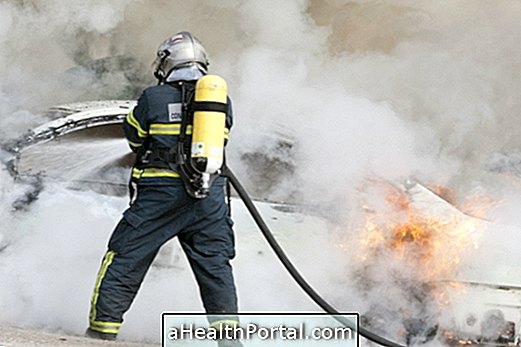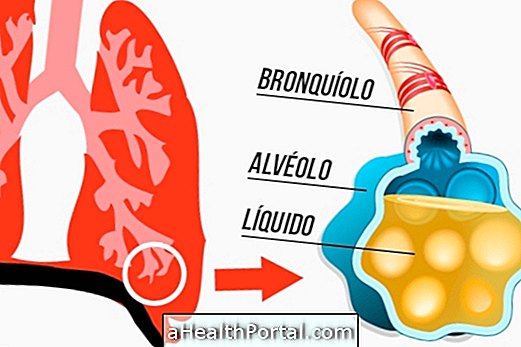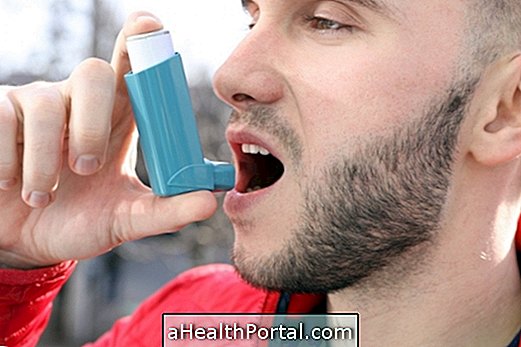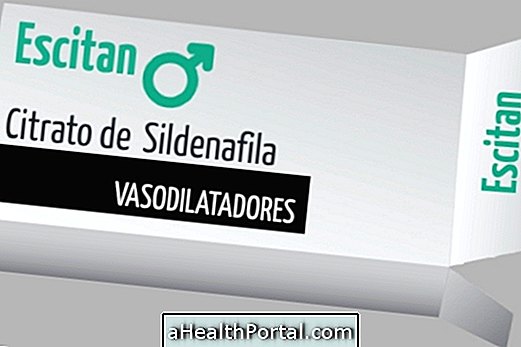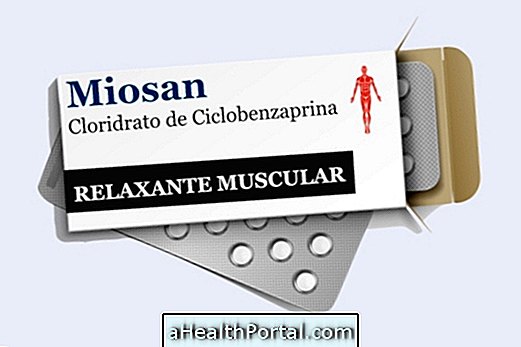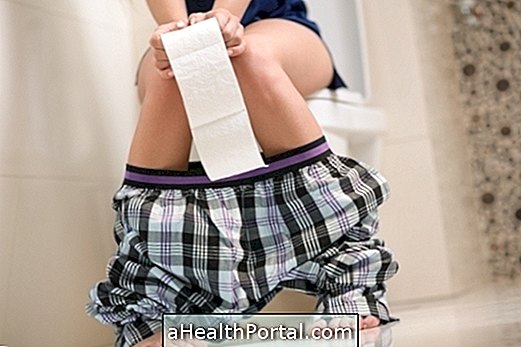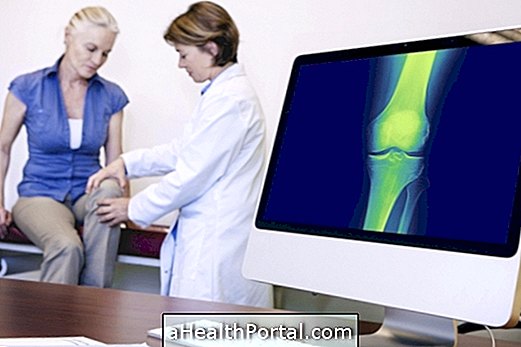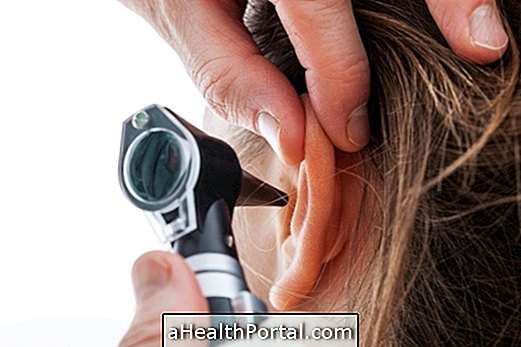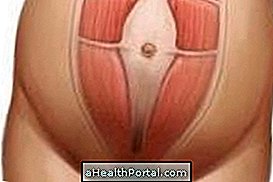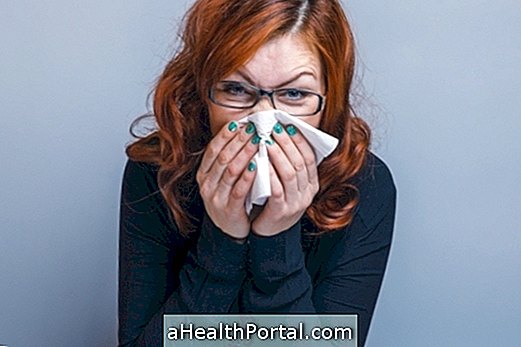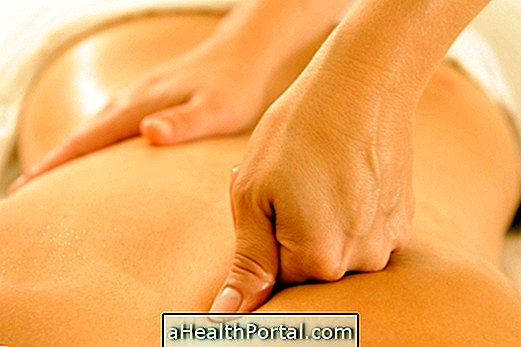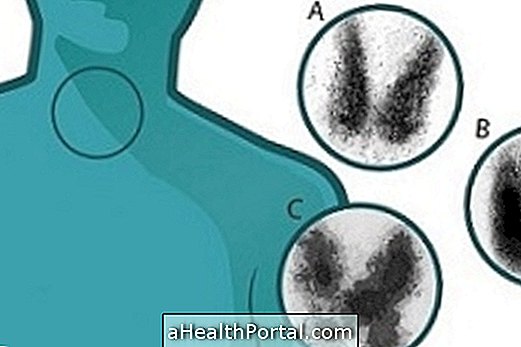Breathing exercises aim to help displace secretions to be more easily eliminated, facilitate oxygen exchange, improve diaphragm mobility, promote chest drainage, recover lung capacity and prevent or re-expand affected areas of the lung.
These exercises can be done with the help of a physiotherapist or alone at home, however, the ideal is that they are always done under the recommendation of a health professional and according to the health history. Watch the following video to learn some exercises you can do to strengthen your lung:

Other simple exercises that you can try at home are:
1. Postural drainage exercise
In this exercise, you should lie down on a sloping surface, keeping your head lower than your body. This will cause the secretions in the respiratory tract to mobilize, making it easier to be removed by coughing.
Postural drainage can be done 3 to 4 times a day, for 30 seconds or during the time determined by the physiotherapist. Learn more about how postural drainage works.
2. Abdominal-diaphragmatic breathing exercise
To perform this exercise correctly, the dominant hand should be placed over the navel, and the non-dominant hand should be placed over the chest, in the region between the nipples. Then, a slow inhalation should be done through the nose, in order to progressively raise the dominant hand, avoiding raising the non-dominant hand. Exhalation should also be slow, usually with the lips half closed, and should only bring the non-dominant hand down.
This exercise consists of performing the inspiration using the abdominal wall and reducing the movement of the chest, followed by a passive exhalation, which contributes to improve the movement of the chest wall and the distribution of ventilation, relieving shortness of breath and increasing resistance to exercise. .
3. Exercise with air support
To perform this exercise, you must inhale slowly, imagining that you are in an elevator that goes up floor by floor. So, you must inhale for 1 second, hold your breath, continue inhaling for another 2 seconds, hold your breath, and so on, as long as possible, until you completely release the air.
This exercise should be done for about 3 minutes. If you experience dizziness it is advisable to stop and rest a few minutes before repeating the exercise, which should be performed 3 to 5 times a day.
4. Arm lift exercise
This exercise should be performed sitting on a chair, with your hands resting on your knees. Then, you should fill your chest with air and slowly raise your outstretched arms, until they are above your head. Finally, you should lower your arms again and release all the air from your lungs.
This exercise can also be performed lying down and must be done for 3 minutes.
5. Exercise with a straw
This exercise is done with the help of a straw, in which it is necessary to blow air into a glass of water, making balls. To do this, you must take a deep breath, hold your breath for 1 second and release the air into the straw, making bubbles in the water slowly. The exercise should be repeated 10 times and should only be performed while sitting or standing. If it is not possible to stay in these positions, the exercise should not be performed.
Alternatively, the person can blow on a whistle, inhaling for 2 or 3 seconds, holding their breath for 1 second and exhaling for another 3 seconds, repeating 5 times. This exercise can now be done lying down.
Can these exercises help with COVID-19?
Breathing exercises are part of respiratory physiotherapy, which is usually used in people with acute or chronic lung problems, to help decrease symptoms and facilitate the recovery process.
Thus, these exercises can be used on people with COVID-19 to relieve symptoms of shortness of breath, make coughing more effective, and reduce the risk of serious complications, such as pneumonia or respiratory failure.
Even in patients who may need to be admitted to the ICU due to COVID-19, exercise, as well as all respiratory physiotherapy, can be a very important part of the treatment, strengthening the breathing muscles, which can end up weakened due to the use of the ventilator.
After fighting infection with the new coronavirus, Mirca Ocanhas explains in an informal conversation how to strengthen the lung:
Who can do the exercises
Breathing exercises are indicated for people with:
- Excessive phlegm production, due to infection, allergies or cigarette use, for example;
- Accute breathing insufficiency;
- Collapse of the lung;
- Difficulty coughing.
In addition, they can also be used whenever it is necessary to increase the flow of oxygen in the body.
Who should not perform the exercises
These exercises should not be performed when the person has a fever above 37.5ºC, since the exercises can raise the body temperature even more. In addition, performing the exercise is not recommended when the pressure is high, as there may be even more pressure changes.
In the case of people with heart disease, breathing exercises should only be performed with the accompaniment of the physiotherapist, as complications may arise.
Was this information helpful?
Yes No
Your opinion is important! Write here how we can improve our text:
Any questions? Click here to be answered.
Email in which you want to receive a reply:
Check the confirmation email we sent you.
Your name:
Reason for visit:
--- Choose your reason --- DiseaseLive betterHelp another personGain knowledge
Are you a health professional?
NoMedicalPharmaceuticalsNurseNutritionistBiomedicalPhysiotherapistBeauticianOther
Bibliography
- THE POLISH CHAMBER OF PHYSIOTHERAPISTS. Coronavirus SARS Cov-2: Recommendations for physiotherapy of adult patients with COVID-19. 2010. Available at:. Accessed on 21 Apr 2020
- THOMAS, Peter et al .. Physiotherapy Management for COVID-19 in the Acute Hospital Setting: Recommendations to guide clinical practice. Journal of Physiotherapy. 2020
- FELTRIM, Maria Ignês Zanetti et. al .. Thoracoabdominal movement and breathing exercises: literature review. Rev Fisoter Univ São Paulo. Vol.11. 2.ed; 105-113, 2004
- SERVIER. Rehabilitation themes - respiratory rehabilitation. 2012. Available at:. Accessed on 14 Apr 2020
- FEDERAL UNIVERSITY HOSPITALS. Respiratory Physiotherapy Techniques in Adult Patients. 2015. Available at:. Accessed on 14 Apr 2020

